Ninety express interest for Taif airport PPP
13 February 2025
Some 90 firms have expressed interest in bidding for a contract to develop and operate a new international airport in Taif in the kingdom’s Mecca province.
Saudi Arabia’s Matarat Holding, through the National Centre for Privatisation & PPP (NCP), invited firms to express interest in bidding for the contract in early December.
The international and local firms that expressed their interest are:
- Abdul Ali Al-Ajmi Company (local)
- Abrdn Investcorp Infrastructure Investments (UK)
- Aeroporti Di Roma (Italy)
- Algihaz Holding (local)
- Al-Jaber Contracting (local)
- Al-Modon Al-Arabia Company (local)
- Al-Rashid Trading & Contracting Company (local)
- Al-Sharif Contracting & Commercial Development (local)
- Al-Yamama Company for Trading & Contracting (local)
- Al-Ayuni Investment & Contracting Company (local)
- Alghanim International General Trading & Contracting (Kuwait)
- Almabani General Contractors (local)
- Almansouryah Company General Contracting (local)
- AlMozaini Real Estate (local)
- Almutlaq Real Estate Investment Company (local)
- Alternative Resources Investment
- Annasban Group (local)
- Asyad Holding Company (local)
- AVIC-KDN Airport Engineering (China)
- Bangalore International Airport (India)
- Binladin International (local)
- Bouygues Batiment (France)
- CACC International Engineering
- China Harbour Engineering Company (China)
- Surbana Consultants (Singapore)
- Buna Al-Khaleej Contracting (local)
- China National Aero-Technology International Engineering Corporation (China)
- China Railway Construction Corporation (China)
- Clavrix (US)
- Consolidated Contractors Company (Greece)
- Contrax International (UAE)
- Corporacion America Airports (Luxembourg)
- Currie & Brown (UK)
- DAA International (Dublin Airport Authority, Ireland)
- Dar Al-Handasah Consultants (Shair & Partners, Lebanon)
- DG Jones & Partners (UAE)
- EB Cornerstone (UK)
- Edgenta Arabia (Malaysia)
- Egis Project (France)
- Enzar Company for Operation & Maintenance (local)
- Erada Advanced Projects (local)
- EXP Arabia (Canada)
- FAS Energy (local)
- Ghesa Ingeniera Technologia (Spain)
- GMR Airports (India)
- Gulf Investment Corporation (Kuwait)
- Haji Abdullah AliReza & Company (local)
- IC Ictas (Turkiye)
- Indiza Airport Management (South Africa)
- Innovative Contractors for Advanced Dimensions (ICAD, local)
- International Energy (local)
- Kalyon Insaat (Turkiye)
- Kolin Insaat (Turkiye)
- Korea Airports Corporation (South Korea)
- Koushan Real Estate Development Company (local)
- Lamar Holding (local)
- Limak Insaat (Turkiye)
- Lynx Contracting Company (local)
- Mada International Holding Company (local)
- Makyol Insaat (local)
- Manchester Airport Group (UK)
- Middle East Tasks (local)
- Modern Airports (local)
- Mota-Engil (Portugal)
- Mowah Company (local)
- Munich Airport International (Germany)
- Namaya Investment Company (local)
- Nasser Abdullah Abu Sarhad (local)
- National Transportation Solution Company (local)
- Nesma & Partners (local)
- Nesma Company (local)
- Pini Group (Switzerland)
- Ports Projects Management & Development Company (local)
- Salso & Associates (Greece)
- Samsung C&T Corporation (South Korea)
- Sarh Developments (local)
- Saudi Arabian Trading & Construction Company (local)
- Saudi Binladin Group (local)
- Saudi Building Technic Maintenance Company (local)
- Skilled Engineers Contracting (local)
- Sumou Real Estate Company (local)
- Tamasuk Holding Company (local)
- Tatweer Buildings Company (local)
- Tav Airports Holding (Turkiye)
- Technical Development Company for Contracting (local)
- Terminal Yapi Ve Ticaret (Turkiye)
- Vantage Group (Australia)
- Vision International Investment Company (local)
- WCT International (Malaysia)
- Zamil Group (local)
The new Taif International airport will be located 21 kilometres southeast of the existing Taif airport, with a capacity to accommodate 2.5 million passengers by 2030.
The clients opted for a 30-year build-transfer-operate (BTO) contract model, including the construction period.
In addition to a new airport terminal, the proposed design features a runway with a full-length parallel taxiway connecting to a single commercial apron.
The scope includes facility buildings, utility networks, car parks and access roads, as well as provisions for additional expansions to meet future subsystem requirements.
The new Taif International airport is expected to meet the projected increase in demand by 2055 and contribute to the economic development of Taif city and its surrounding areas, in line with the kingdom’s National Aviation Strategy.
It is also expected to meet the needs of Umrah pilgrims as a viable alternative within the region’s multi-airport system, which includes King Abdulaziz Airport in Jeddah, Prince Mohammed Bin Abdulaziz Airport in Medina and Prince Abdulmohsen Bin Abdulaziz Airport in Yanbu.
Other airport PPPs
In addition to the Taif International project, three other airports comprise the first stage of Saudi Arabia’s latest plan to modernise and privatise its international and domestic airports.
The other planned airport public-private partnership (PPP) schemes are in Abha, Hail and Qassim.
Matarat and NCP recently tendered the contract to develop and operate a new passenger terminal building and related facilities at Abha International airport. They expect to receive bids by April.
Located in Asir province, the first phase of the Abha International airport PPP project is set for completion in 2028. It will increase the airport terminal area from 10,500 square metres (sq m) to 65,000 sq m.
The contract scope includes a new rapid-exit taxiway on the current runway, a new apron to serve the new terminal, access roads to the new terminal building and a new car park area. The scope also includes support facilities such as an electrical substation expansion and a new sewage treatment plant.
The transaction advisory team for the client on the Abha airport PPP scheme comprises UK-headquartered Deloitte and Ashurst as financial and legal advisers, respectively, and ALG as technical adviser.
Previous tenders
The Taif, Hail and Qassim airport schemes were previously tendered and awarded as PPP projects using a BTO model.
Saudi Arabia’s General Authority of Civil Aviation (Gaca) awarded the contracts to develop four airport PPP projects to two separate consortiums in 2017.
A team of Tukey’s TAV Airports and the local Al-Rajhi Holding Group won the 30-year concession agreement to build, transfer and operate airport passenger terminals in Yanbu, Qassim and Hail.
A second team, comprising Lebanon’s Consolidated Contractors Company, Germany’s Munich Airport International and local firm Asyad Group, won the BTO contract to develop Taif International airport.
However, these projects stalled following the restructuring of the kingdom’s aviation sector.
Saudi Arabia has already privatised airports, including the $1.2bn Prince Mohammed Bin Abdulaziz International airport in Medina, which was developed as a PPP and opened in 2015.
Exclusive from Meed
-
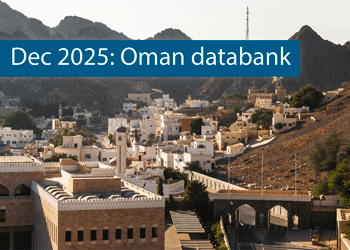 Oman’s growth forecast points upwards
Oman’s growth forecast points upwards24 December 2025
-
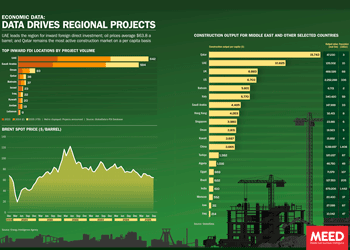 December 2025: Data drives regional projects
December 2025: Data drives regional projects23 December 2025
-
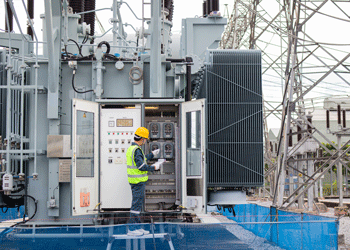 Local firm bids lowest for Kuwait substation deal
Local firm bids lowest for Kuwait substation deal22 December 2025
-
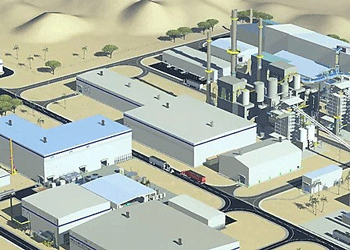 Saudi-Dutch JV awards ‘supercentre’ metals reclamation project
Saudi-Dutch JV awards ‘supercentre’ metals reclamation project22 December 2025
-
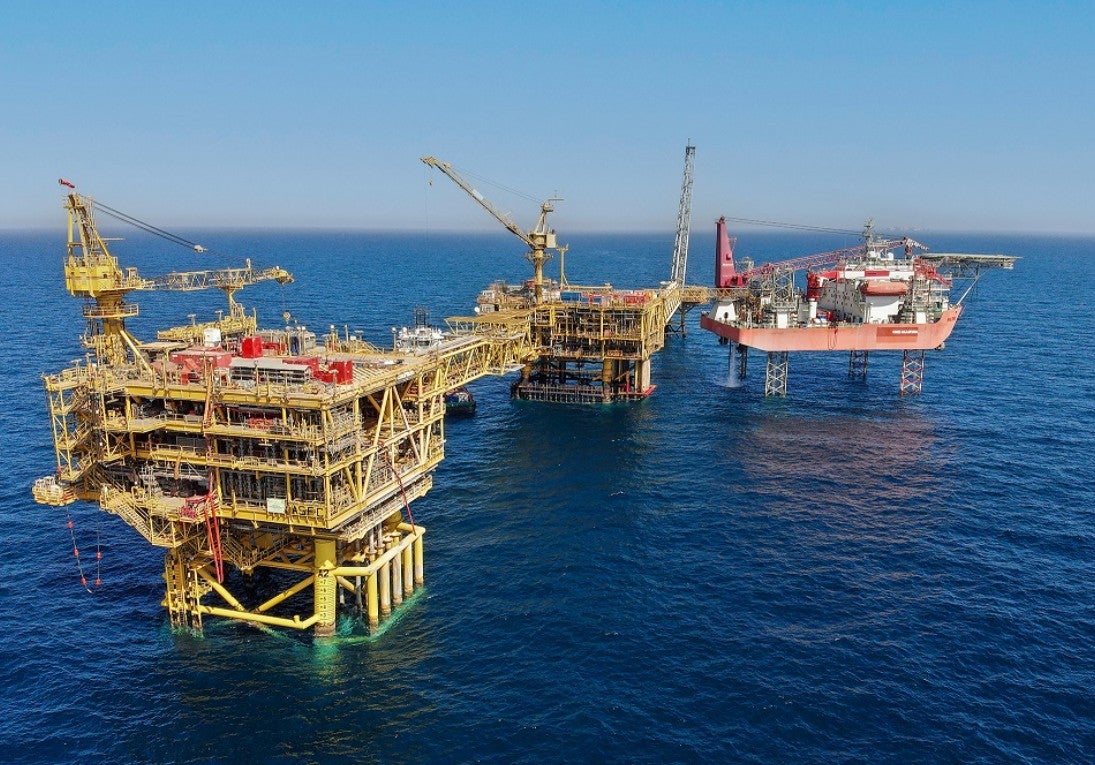 QatarEnergy LNG awards $4bn gas project package
QatarEnergy LNG awards $4bn gas project package22 December 2025
All of this is only 1% of what MEED.com has to offer
Subscribe now and unlock all the 153,671 articles on MEED.com
- All the latest news, data, and market intelligence across MENA at your fingerprints
- First-hand updates and inside information on projects, clients and competitors that matter to you
- 20 years' archive of information, data, and news for you to access at your convenience
- Strategize to succeed and minimise risks with timely analysis of current and future market trends

Related Articles
-
 Oman’s growth forecast points upwards
Oman’s growth forecast points upwards24 December 2025

MEED’s January 2026 report on Oman includes:
> COMMENT: Oman steadies growth with strategic restraint
> GVT & ECONOMY: Oman pursues diversification amid regional concerns
> BANKING: Oman banks feel impact of stronger economy
> OIL & GAS: LNG goals galvanise Oman’s oil and gas sector
> POWER & WATER: Oman prepares for a wave of IPP awards
> CONSTRUCTION: Momentum builds in construction sectorTo see previous issues of MEED Business Review, please click herehttps://image.digitalinsightresearch.in/uploads/NewsArticle/15306449/main.gif -
 December 2025: Data drives regional projects
December 2025: Data drives regional projects23 December 2025
Click here to download the PDF
Includes: Top inward FDI locations by project volume | Brent spot price | Construction output
MEED’s January 2026 report on Oman includes:
> COMMENT: Oman steadies growth with strategic restraint
> ECONOMY: Oman pursues diversification amid regional concerns
> BANKING: Oman banks feel impact of stronger economy
> OIL & GAS: LNG goals galvanise Oman’s oil and gas sector
> POWER & WATER: Oman prepares for a wave of IPP awards
> CONSTRUCTION: Momentum builds in construction sectorTo see previous issues of MEED Business Review, please click herehttps://image.digitalinsightresearch.in/uploads/NewsArticle/15306140/main.gif -
 Local firm bids lowest for Kuwait substation deal
Local firm bids lowest for Kuwait substation deal22 December 2025
The local Al-Ahleia Switchgear Company has submitted the lowest price of KD33.9m ($110.3m) for a contract to build a 400/132/11 kV substation at the South Surra township for Kuwait’s Public Authority for Housing Welfare (PAHW).
The bid was marginally lower than the two other offers of KD35.1m and KD35.5m submitted respectively by Saudi Arabia’s National Contracting Company (NCC) and India’s Larsen & Toubro.
PAHW is expected to take about three months to evaluate the prices before selecting the successful contractor.
The project is one of several transmission and distribution projects either out to bid or recently awarded by Kuwait’s main affordable housing client.
This year alone, it has awarded two contracts worth more than $100m for cable works at its 1Z, 2Z, 3Z and 4Z 400kV substations at Al-Istiqlal City, and two deals totalling just under $280m for the construction of seven 132/11kV substations in the same township.
Most recently, it has tendered two contracts to build seven 132/11kV main substations at its affordable housing project, west of Kuwait City. The bid deadline for the two deals covering the MS-01 through to MS-08 substations is 8 January.
https://image.digitalinsightresearch.in/uploads/NewsArticle/15305745/main.gif -
 Saudi-Dutch JV awards ‘supercentre’ metals reclamation project
Saudi-Dutch JV awards ‘supercentre’ metals reclamation project22 December 2025
The local Advanced Circular Materials Company (ACMC), a joint venture of the Netherlands-based Shell & AMG Recycling BV (SARBV) and local firm United Company for Industry (UCI), has awarded the engineering, procurement and construction (EPC) contract for the first phase of its $500m-plus metals reclamation complex in Jubail.
The contract, estimated to be worth in excess of $200m, was won by China TianChen Engineering Corporation (TCC), a subsidiary of China National Chemical Engineering Company (CNCEC), following the issue of the tender in July 2024.
Under the terms of the deal, TCC will process gasification ash generated at Saudi Aramco’s Jizan refining complex on the Red Sea coast to produce battery-grade vanadium oxide and vanadium electrolyte for vanadium redox flow batteries. AMG will provide the licensed technology required for the production process.
The works are the first of four planned phases at the catalyst and gasification ash recycling ‘Supercentre’, which is located at the PlasChem Park in Jubail Industrial City 2 alongside the Sadara integrated refining and petrochemical complex.
Phase 2 will expand the facility to process spent catalysts from heavy oil upgrading facilities to produce ferrovanadium for the steel industry and/or additional battery-grade vanadium oxide.
Phase 3 involves installing a manufacturing facility for residue-upgrading catalysts.
In the fourth phase, a vanadium electrolyte production plant will be developed.
The developers expect a total reduction of 3.6 million metric tonnes of carbon dioxide emissions a year when the four phases of the project are commissioned.
SARBV first announced its intention to build a metal reclamation and catalyst manufacturing facility in Saudi Arabia in November 2019. The kingdom’s Ministry of Investment, then known as the Saudi Arabian General Investment Authority (Sagia), supported the project.
In July 2022, SARBV and UCI signed the agreement to formalise their joint venture and build the proposed facility.
The project has received support from Saudi Aramco’s Namaat industrial investment programme. Aramco, at the time, also signed an agreement with the joint venture to offtake vanadium-bearing gasification ash from its Jizan refining complex.
Photo credit: SARBV
https://image.digitalinsightresearch.in/uploads/NewsArticle/15305326/main.gif -
 QatarEnergy LNG awards $4bn gas project package
QatarEnergy LNG awards $4bn gas project package22 December 2025
QatarEnergy LNG, a subsidiary of state-owned QatarEnergy, has awarded the main engineering, procurement, construction and installation (EPCI) contract for a major package for the second phase of its North Field Production Sustainability (NFPS) project.A consortium comprising the Italian contractor Saipem and state-owned China Offshore Oil Engineering Company (COOEC) has secured the EPCI contract for the COMP5 package. The contract value is $4bn, with Saipem declaring its share to be worth $3.1bn.
Milan-headquartered Saipem said the contract will run for about five years. The scope of work comprises engineering, procurement, fabrication and installation of two compression complexes, each including a compression platform, a living quarters platform, a flare platform supporting the gas combustion system, and the related interconnecting bridges. Each complex will have a total weight of about 68,000 tonnes.
Offshore installation operations will be carried out by Saipem’s De He construction vessel in 2029 and 2030.
MEED previously reported that the following contractors submitted bids for the NFPS phase two COMP5 package:
- Larsen & Toubro Energy Hydrocarbon (India)
- McDermott (US)
- Saipem/China Offshore Oil Engineering Company (Italy/China)
QatarEnergy LNG, formerly Qatargas, is said to have issued the tender for the NFPS phase two COMP5 package in the first quarter of the year.
Contractors submitted technical bids for the COMP5 package in late June, while commercial bids were submitted by 8 October, as per sources.
Based upon initial evaluation of bids by QatarEnergy LNG, L&TEH has emerged as the lowest bidder for the COMP5 package, followed by McDermott, with the consortium of Saipem and COOEC in third place, MEED reported in late October.
In the weeks following that, the project operator is said to have engaged all bidders for a final round of negotiations, during which the consortium of Saipem and COOEC is believed to have “clinched the deal”, according to sources.
The detailed scope of work on the COMP5 package covers the EPCI work on the following:
- Two gas compression platforms, each weighing 30,000-35,000 tonnes, plus jacket
- Two living quarters platforms, plus jacket
- Two gas flare platforms, plus jacket
- Brownfield modification work at two complexes
NFPS scheme
QatarEnergy’s North Field liquefied natural gas (LNG) expansion programme requires the state enterprise to pump large volumes of gas from the North Field offshore reserve to feed the three phases of the estimated $40bn-plus programme.
QatarEnergy has already invested billions of dollars in engineering, procurement and construction works on the two phases of the NFPS project, which aims to maintain steady gas feedstock for the North Field LNG expansion phases.
The second NFPS phase will mainly involve building gas compression facilities to sustain and gradually increase gas production from Qatar’s offshore North Field gas reserve over the long term.
Saipem has been the most successful contractor on the second NFPS phase, securing work worth a total of $8.5bn.
QatarEnergy LNG awarded Saipem a $4.5bn order in October 2022 to build and install gas compression facilities. The main scope of work on the package, which is known as EPCI 2, covers two large gas compression complexes that will comprise decks, jackets, topsides, interconnecting bridges, flare platforms, living quarters and interface modules.
The gas compression complexes – CP65 and CP75 – will weigh 62,000 tonnes and 63,000 tonnes, respectively, and will be the largest fixed steel jacket compression platforms ever built.
Following that, Saipem won combined packages COMP3A and COMP3B of the NFPS project’s second phase in September last year.
The scope of work on the combined packages encompasses the EPCI of a total of six platforms, approximately 100 kilometres (km) of corrosion resistance alloy rigid subsea pipelines of 28-inches and 24-inches diameter, 100km of subsea composite cables, 150km of fibre optic cables and several other subsea units.
Separately, QatarEnergy LNG awarded McDermott the contract for the NFPS second phase package known as EPCI 1, or COMP1, in July 2023. The scope of work on the estimated $1bn-plus contract is to install a subsea gas pipeline network at the North Field gas development.
In March this year, India’s Larsen & Toubro Energy Hydrocarbon (LTEH) won the main contract for the combined 4A and 4B package, which is the fourth package of the second phase of the NFPS project and is estimated to be valued at $4bn-$5bn.
The main scope of work on the package is the EPCI of two large gas compression systems that will be known as CP8S and CP4N, each weighing 25,000-35,000 tonnes. The contract scope also includes compression platforms, flare gas platforms and other associated structures.
LTHE sub-contracted detailed engineering and design works on the combined 4A and 4B package to French contractor Technip Energies.
NFPS first phase
Saipem is also executing the EPCI works on the entire first phase of the NFPS project, which consists of two main packages.
Through the first phase of the NFPS scheme, QatarEnergy LNG aims to increase the early gas field production capacity of the North Field offshore development to 110 million tonnes a year.
QatarEnergy LNG awarded Saipem the contract for the EPCI package in February 2021. The package is the larger of the two NFPS phase one packages and has a value of $1.7bn.
Saipem’s scope of work on the EPCI package encompasses building several offshore facilities for extracting and transporting natural gas, including platforms, supporting and connecting structures, subsea cables and anti-corrosion internally clad pipelines.
The scope of work also includes decommissioning a pipeline and other significant modifications to existing offshore facilities.
In addition, in April 2021, QatarEnergy LNG awarded Saipem two options for additional work within the EPCI package, worth about $350m.
QatarEnergy LNG awarded Saipem the second package of the NFPS phase one project, estimated to be worth $1bn, in March 2021.
Saipem’s scope of work on the package, which is known as EPCL, mainly covers installing three offshore export trunklines running almost 300km from their respective offshore platforms to the QatarEnergy LNG north and south plants located in Ras Laffan Industrial City.
Saipem performed the front-end engineering and design work on the main production package of the first phase of the NFPS as part of a $20m contract that it was awarded in January 2019. This provided a competitive advantage to the Italian contractor in its bid to win the package.
https://image.digitalinsightresearch.in/uploads/NewsArticle/15305330/main2239.jpg

